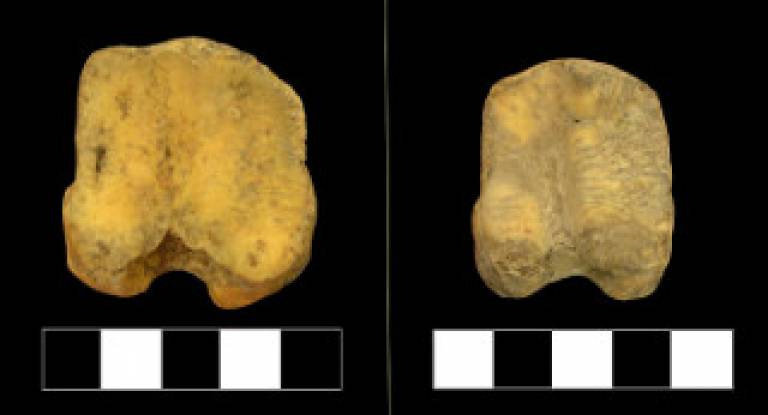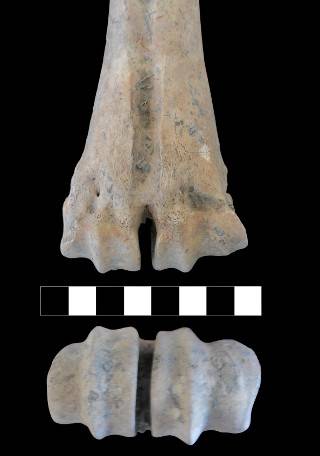Earliest evidence of 'animal engines'
12 December 2018
A new study led by UCL Institute of Archaeology researchers has found that cattle pulled loads 2,000 years earlier than previously thought.

In the study, published this week in Antiquity, archaeologists discovered that the bones in the feet of Neolithic cattle demonstrated distinctive wear patterns, indicative of exploitation as 'animal engines'. If these practices can be proven elsewhere, it is expected to have major ramifications for our understanding of animal use in the Neolithic.

Analysis and systematic comparison of material from 11 Neolithic sites in the central and western Balkans was conducted and shows that the earliest European farmers were not simply using cattle as a source of meat or dairy products, but also as a source of propulsion. The findings indicate that traction in some form, and not necessarily through the use of ploughs or wagons, was present much earlier than previously thought.
According to lead author Jane
Gaastra:
- "We have been able to provide the first conclusive evidence that farmers were using cattle for 'traction' almost 2,000 years earlier than the previous consensus date. There has only been one other foot sample from the Neolithic period found in Syria but this was inconclusive. The part of the Balkans where we found the bones was heavy forested in the Neolithic period, so chopping trees to create settlements would have required lot of man power. Cattle would therefore have been a vital asset helping to transport items such timber for housing."
Co-author Marc Vander Linden (formerly of the UCL Institute of Archaeology, now at the University of Cambridge), said:
- "Until now it has generally been considered that traction only emerged by the 5th and 4th millennium BC, parallel to the introduction of the plough and the wheel, but our study demonstrates that this is not the case. We reveal that when the wheel and the plough became available farmers were already experienced in using cattle for traction, and this could have facilitated the spread of these innovations."
The researchers hope to replicate the study in other European regions to determine the extent and duration of this form of traction. It is still unknown whether this form of traction is seen in only a selection of Neolithic groups or was a common practice across Europe. A firm understanding of the nature of early traction evidence in prehistoric Europe has significant implications for our knowledge of both management practices and the nature of labour and movement in prehistoric societies.
The Antiquity article stems from the European Research Council funded project EUROFARM, awarded to Marc Vander Linden and hosted by the UCL Institute of Archaeology (2012-17), which investigated the transmission of farming and associated technological innovations (landscape use, pottery, lithics) in the western Balkans during the 6th and 5th millennium BC.
 Close
Close

